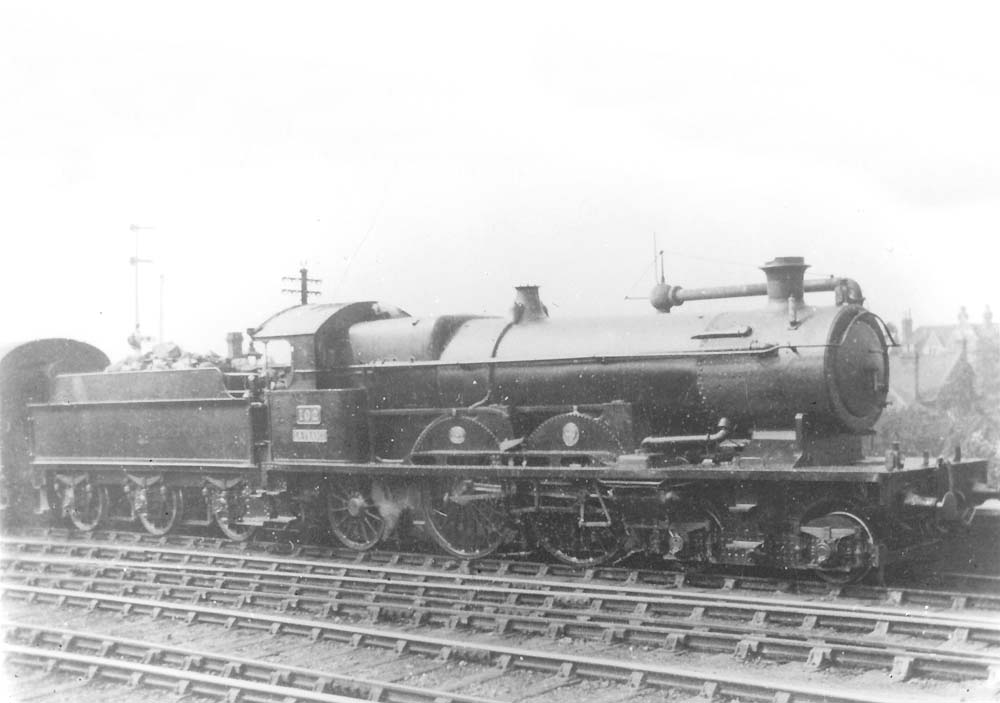 |
|
GWR Route: Banbury to Wolverhampton
Leamington Spa Station: gwrls248
 |
GWR Atlantic 4-4-2 No 102 'La France' seen fitted with a later
GWR boiler on an up express circa 1922. This locomotive, built to a French
design, was originally ordered by Churchward in order to compare the
performance of this design to his own. A number of steam engine designs had
applied the marine principle of re-using exhaust steam that still had
considerable energy, in a second, lower-pressure set of cylinders. Churchward
bought the De Glehn compound engine No 102 in 1903 and after having been tested
in this configuration was subsequently rebuilt as a 4-6-0 (having been designed
to accommodate this change). This engine had two high pressure cylinders
between the frames, with pistons linked to the front driving wheels, and two
lower pressure cylinders visible on the outside of the frames and wheels, set
further back and acting on the second set of wheels; 4 cylinders in all. The
French compound had a high boiler pressure when compared with its test rivals,
and only when tested alongside 200lb/psi two cylinder engines without
compounding (simple engines) was a valid comparison made.
Churchward found no efficiency advantage - but what he did find
was that the smoother riding of the 4-cylinder engine encouraged economical use
of steam by crews (who had tended to use long cut-offs to dampen rocking in two
cylinder engines), and also gave huge scope for more power. The problems of
loads on rods and axleboxes was also reduced by the French division of the
drive across two sets of wheels. The concept of the GWR 4-cylinder engine was
born. The first of these new engine was No. 40, later named North Star, which
emerged from Swindon works in 1906, in Atlantic 4-4-2 wheel configuration. It
was as revolutionary to steam express locomotive building as Admiral Fisher's
HMS Dreadnought was to battleship building in the same decade, and influenced
all express steam engine designs in the UK after it. The new engines of the
'Star' class, were all built with a 4-6-0 wheel arrangement, and No. 40, North
Star was converted to this layout in 1909. 73 engines of this successful class
were built, many lasting into the 1950s. One, Lode Star, remains as a static
exhibit at the National railway Museum in York. The above courtesy of
6023 King Edward II
Project.
 back back

|
